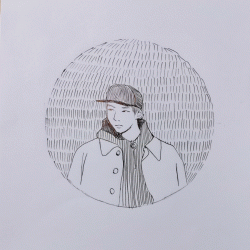With the idea of being confined inside a room, I researched some films and historical events that portray this same idea.
OLDBOY (2003) starts off the film with its main protagonist Oh Daesu waking up in a small motel room where he couldn’t leave and was given the same food for every meal. He was held captive for no reason for years until he was suddenly released one day and set out to find his captor.
There is an apparent transformation in Daesu’s appearance (his hair and beard growing) to show the passage of time as well as the events occurring in the news. There is also a clear shift in his character at the start of his captivity, ten years in when he grew insane after witnessing the loss of his wife on the news, and when he was suddenly released.
Susunu! Denpa Shōnen (1998) is a controversial Japanese reality show in the 90s. For its challenge entitled Denpa Shōnen teki Kenshō Seikatsu (“a life out of prizes by Denpa Shōnen”), the show put its raffle winner, Nasubi, in a small apartment with no food, clothes, or appliances except for a table of envelopes and a rack of magazines. The challenge was to survive on sweepstakes from magazines by mailing them in with the provided envelopes. The only way to win the challenge and leave the room was to reach a monetary value of one million yen (approx. 7,218 GBP) worth of sweepstakes.
Nasubi spent 15 months naked and filling in contest entries before he reached his goal of one million yen, with a viewership of 17 million for the show. He was taken on a trip to South Korea to celebrate before being locked inside a similar room and told to earn enough prizes to equate the price of a plane ticket back to Tokyo. By that time, he was no longer accustomed to clothes and human interaction.
A similar transformation can be found in Nasubi’s appearance and personality from his happy-go-lucky attitude going into the challenge, and his complete bewilderment at the sight of an audience applauding him after 15 months of being naked without any human interaction.
White room torture is a psychological torture method where a prisoner is isolated in a white cell designed so that there is no sound or shadows, aimed at complete sensory deprivation and isolation. Prisoners were found to have lost their sense of identity and experience hallucination as well as psychotic breaks.
PORTRAYALS OF INSANITY
I wanted the animatic to include a slow build-up of suspense which will lead to Tai’s character breaking and thrashing around as he’s been mentally pushed to his limits.
What I immediately thought of was the film ‘Don’t Hug Me I’m Scared’ that went viral in 2011 due to the plot twist and disturbing nature.
What makes the film so unsettling is the title (alluding to the corruption of children’s entertainment industry) as well as the diversion from what seemed to be a children’s song about being creative to ominous cuts and increasingly disturbing visuals such as putting glitter on a heart or spelling out ‘death’ with potato stamps. All of this is accompanied by increasingly messy music and eventually screeching sounds of string instruments playing off-key.
La Casa Lobo (The Wolf House) is a Chilean stop-motion movie about a woman who escaped a cult-like colony to an abandoned hut in the forest with two pigs. She stayed with the pigs in the hut for 100 days, and those 100 days of isolation began to pick away at her sanity and eventually the environment began to morph according to her mental state. The pigs became children and the events that follow are so indescribably insane.
From these two examples, I could see how insanity can stem from the normal, creating a seemingly harmless environment before manipulating it into chaos and mayhem.
With these resources in mind, I will hopefully create an animatic that can visually and audibly convey the concept of losing your sanity in quarantine/isolation.
⇦ IDEAS

